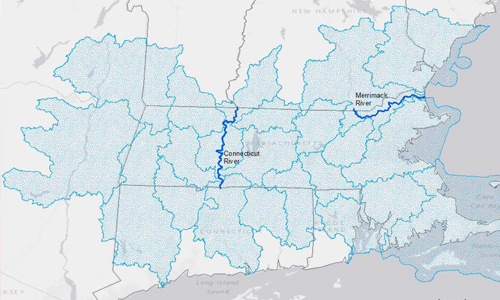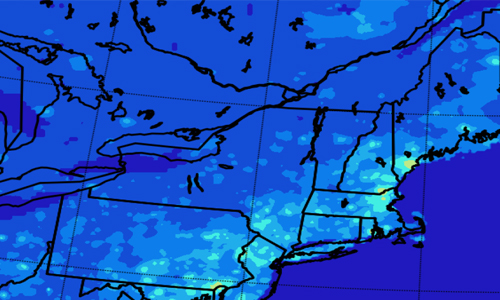Estimating Future Changes in 100-year, 24-hour Flows on the Connecticut and Merrimack Rivers
Funding Source: MassDOT
Title: Estimating Future Changes in 100-year, 24-hour Flows on the Connecticut and Merrimack Rivers
Date: 2019
Status: Completed
Summary: This study investigates the potential impacts of climate change on future flows in the main stem of the Connecticut and Merrimack rivers within Massachusetts. The study applies two common climate projections (Representative Concentration Pathways), RCP 4.5 and RCP 8.5, to the 21st century. The authors use downscaled gridded precipitation forecasts from fourteen global circulation models (GCMs) to estimate the 100-year, 24-hour extreme precipitation events for two future time-periods: near-term (years 2021-2060) and far-term (years 2060-2099). They compare 100-year, 24-hour extreme precipitation events to extreme precipitation events during a base period (1960-1999). For many counties in Massachusetts including southern Berkshire, Hampden, southern Worcester, Norfolk, Essex, and Suffolk, future projections of 100-year, 24-hour extreme precipitation events when considering the 8.5 RCP scenario show increases of over 25% during the near-term and over 50% during the far-term. Increases also occur in 100-year, 24-hour flow estimates. The medians of the GCMs using the RCP 4.5 and RCP 8.5 suggest 2.9-8.1% (near term) and 9.0-14.1% (far-term) increases in the 100-year, 24-hour flow event in the Connecticut River, and 9.9-13.7% (near term) and 15.8-20.6% (far term) increases in the 100-year flow event in the Merrimack River. Far-term estimates for another model suggest even larger changes in the 100-year, 24-hour flow. These significant increases suggest that infrastructure whose design is based on historical hydrological events/records may not be adequate to sustain the 100-year, 24-hour flows that may occur during the latter half of this century.



